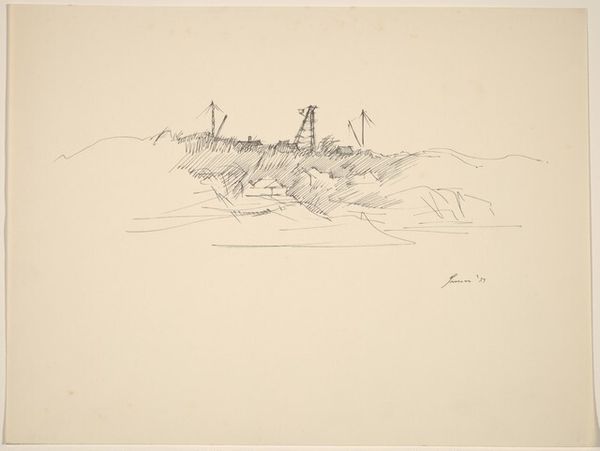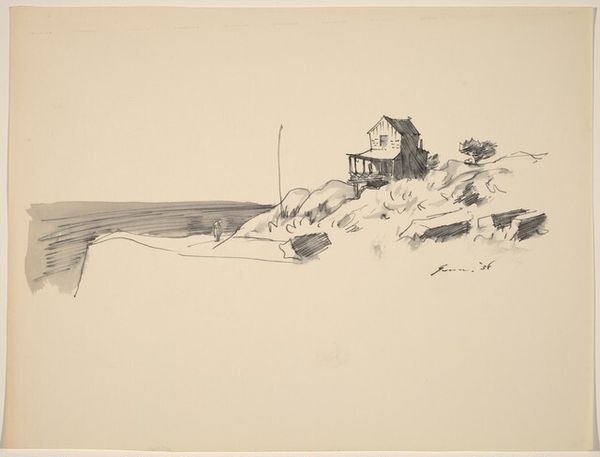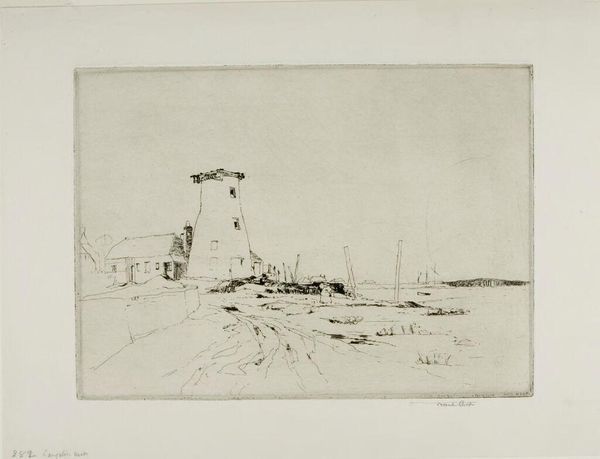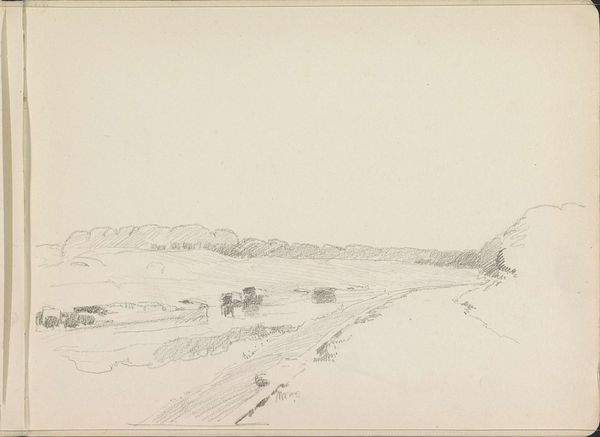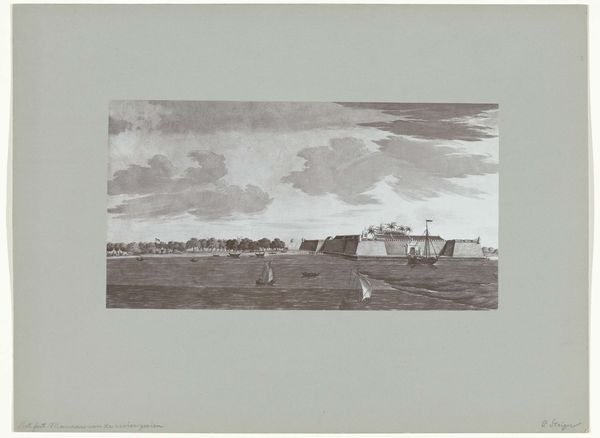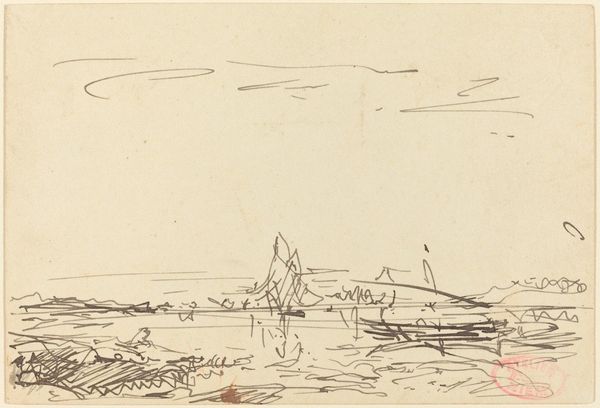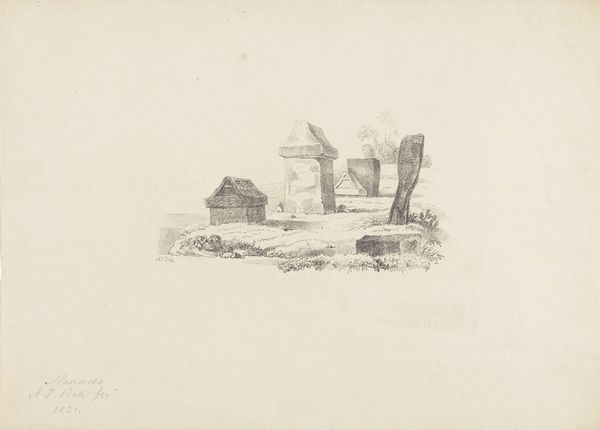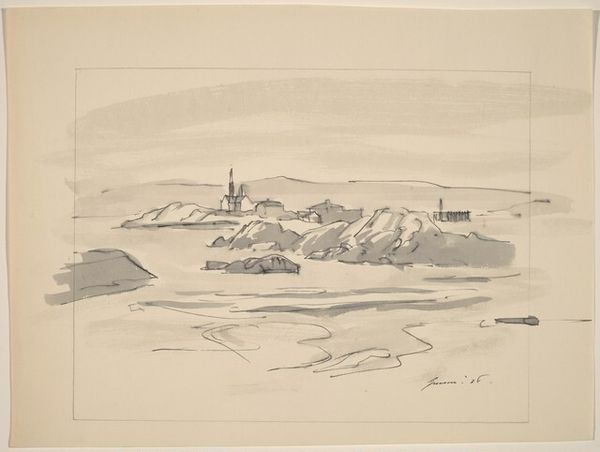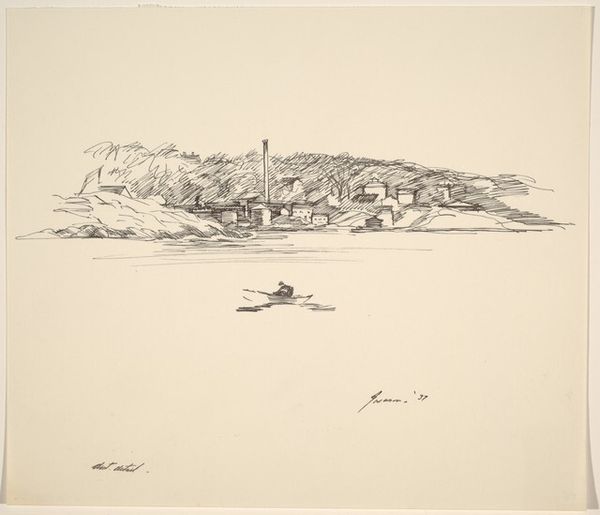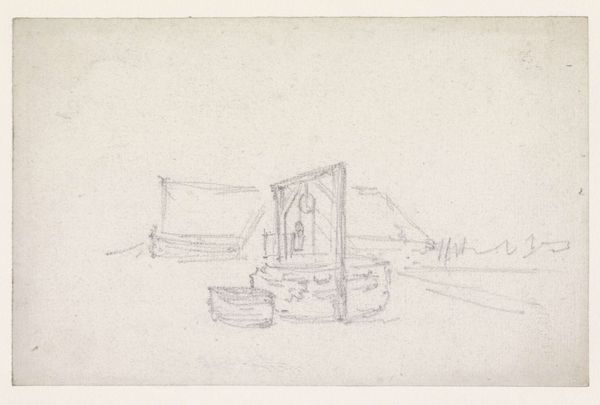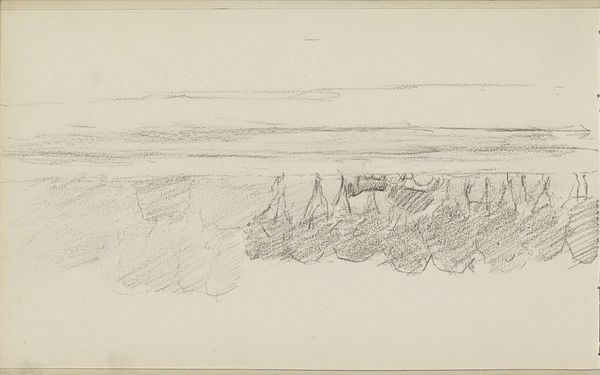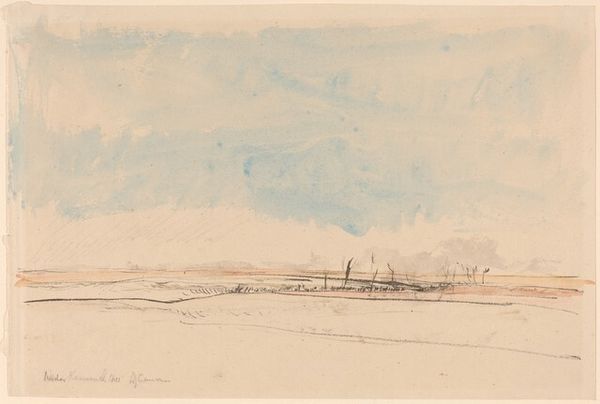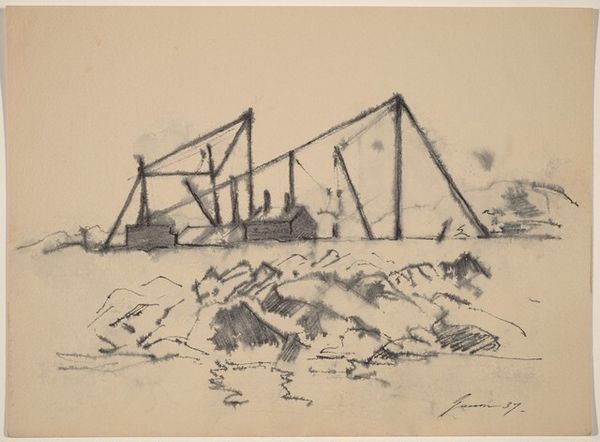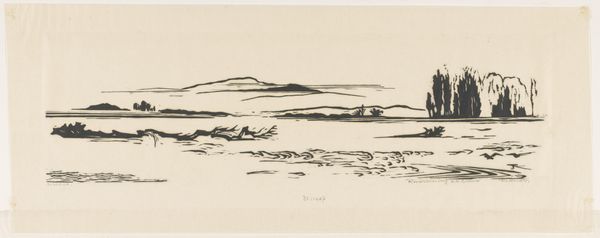
drawing, paper, pencil
#
drawing
#
ink paper printed
#
pencil sketch
#
landscape
#
etching
#
paper
#
pencil
#
realism
Dimensions: overall: 18.5 x 23.5 cm (7 5/16 x 9 1/4 in.)
Copyright: National Gallery of Art: CC0 1.0
Curator: What we have here is "Pilings and Boats," a 1957 pencil and ink drawing on paper by Donald Carlisle Greason. It's a rather subdued scene, isn't it? Editor: It definitely evokes a sense of quiet solitude. The limited palette, the soft lines, it feels like a memory, a place almost forgotten. The leaning pilings suggest a sense of decay and the passage of time. Curator: Indeed. Greason, though perhaps not a household name, was deeply involved in documenting maritime culture, particularly around New England. These humble materials reflect his connection with the working class. How do you see the sociopolitical dimension of an image like this? Editor: I'm drawn to what's *not* shown. Where are the people beyond that small figure in the boat? The drawing emphasizes the relationship between humans and their environment, hinting at themes of labor, dependence, and maybe even environmental change. Who gets access to these resources and who profits from the sea? Curator: That's an insightful angle. The pilings could symbolize the infrastructure supporting maritime industries, revealing their reliance on a natural resource and inviting reflection on capitalism’s role in environmental transformations and social hierarchies of seaside communities. Editor: Precisely! Also, the artistic choice to present this landscape in monochrome flattens the image in ways that encourage a certain nostalgia or longing. It calls attention to the idea of a disappearing landscape—perhaps one being actively destroyed, forgotten, or altered. What once sustained communities risks vanishing entirely. Curator: Perhaps Greason implicitly invites us to think about our contemporary moment. These ghostly boats can symbolize historical social relations but simultaneously are also a symbol for the ecological crisis facing these kinds of maritime communities today. What steps can art institutions take in showcasing work such as this to prompt community dialogue? Editor: Exactly. We could emphasize stories from various intersectional standpoints such as gender, race, class. That way the history may become enlivened. Curator: It certainly gives one a lot to contemplate! I’ll be thinking about that more deeply. Editor: Agreed! These glimpses of the past provide space for us to consider alternative futures for coastal regions and working peoples everywhere.
Comments
No comments
Be the first to comment and join the conversation on the ultimate creative platform.
